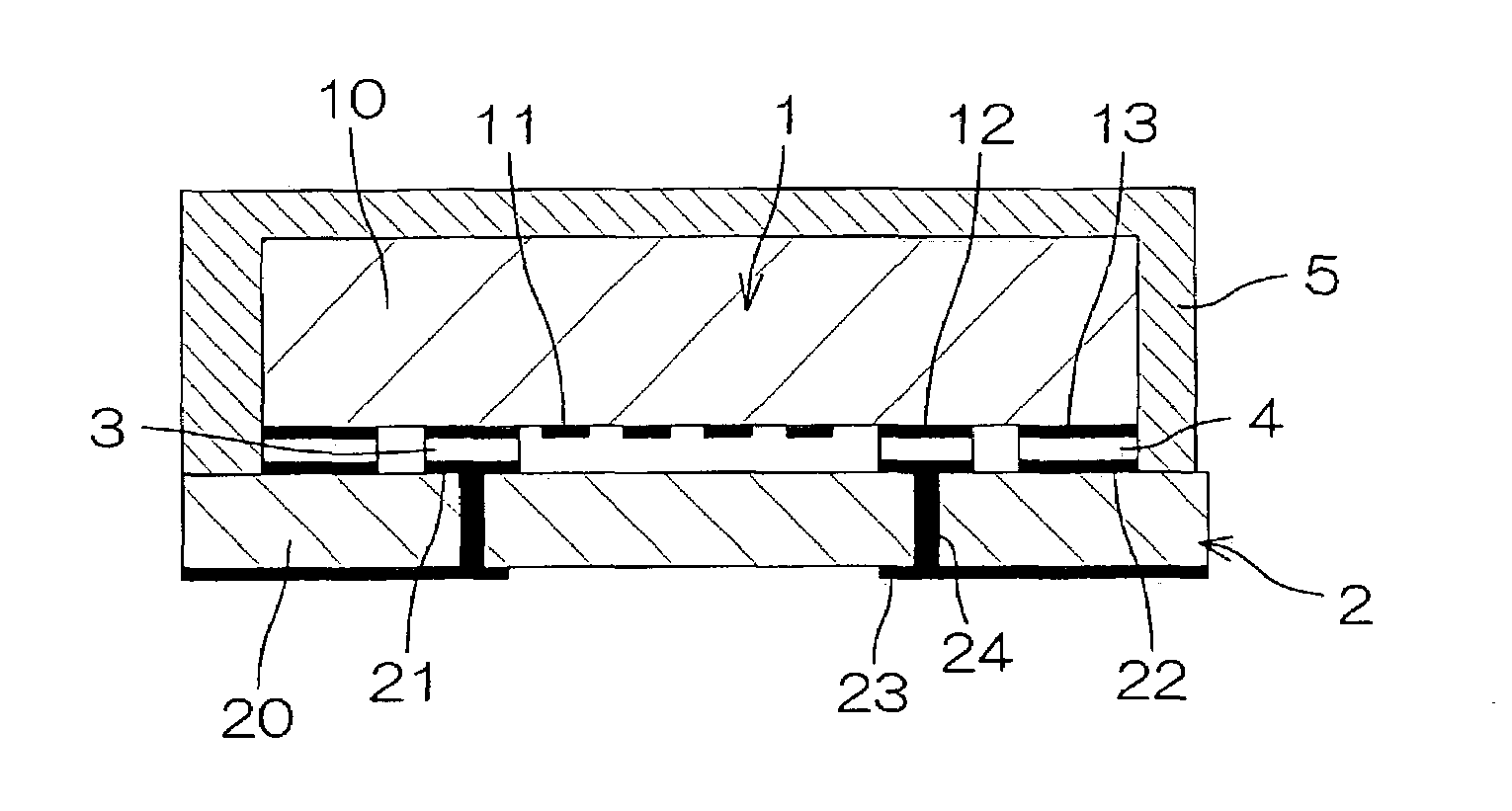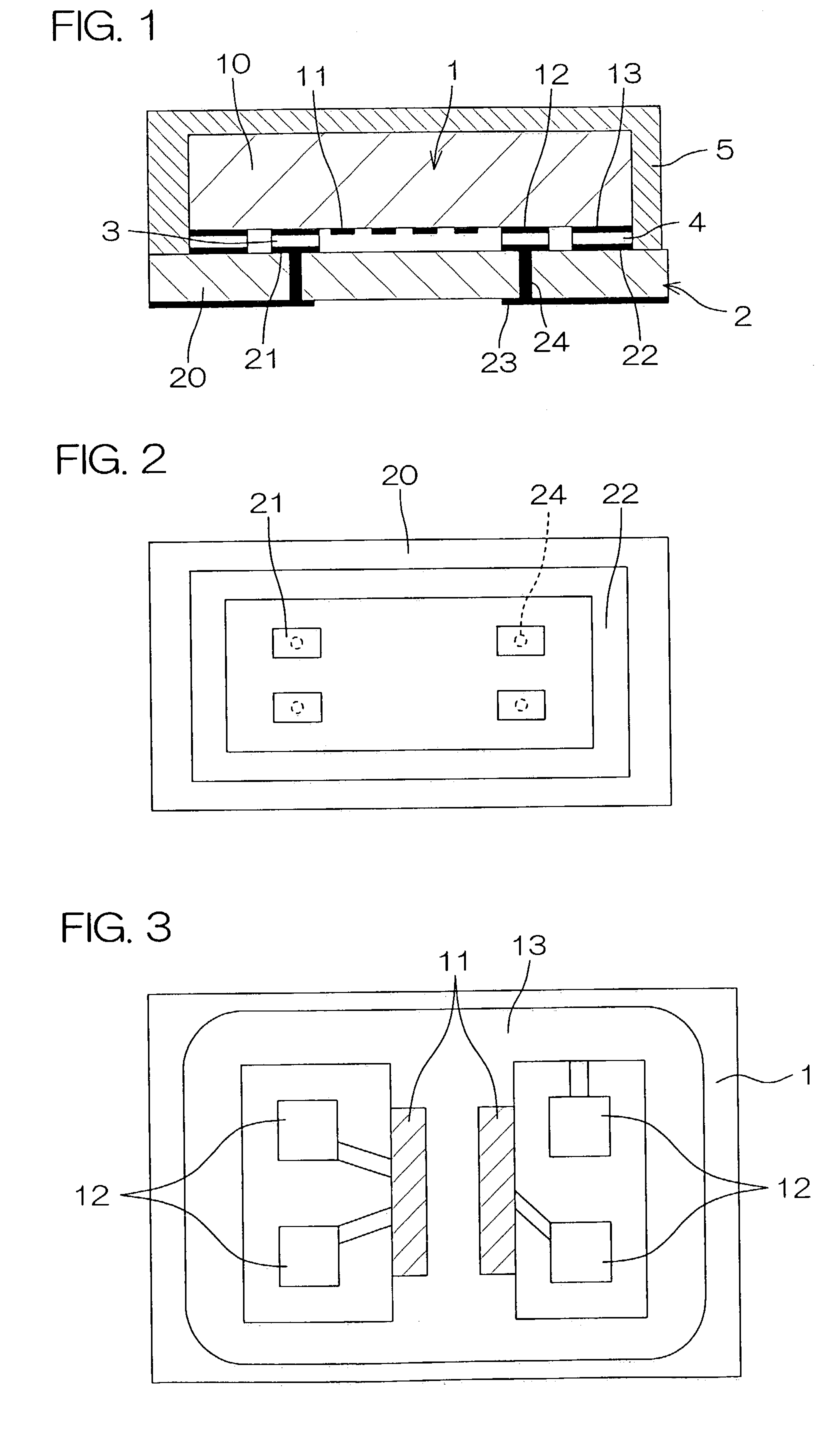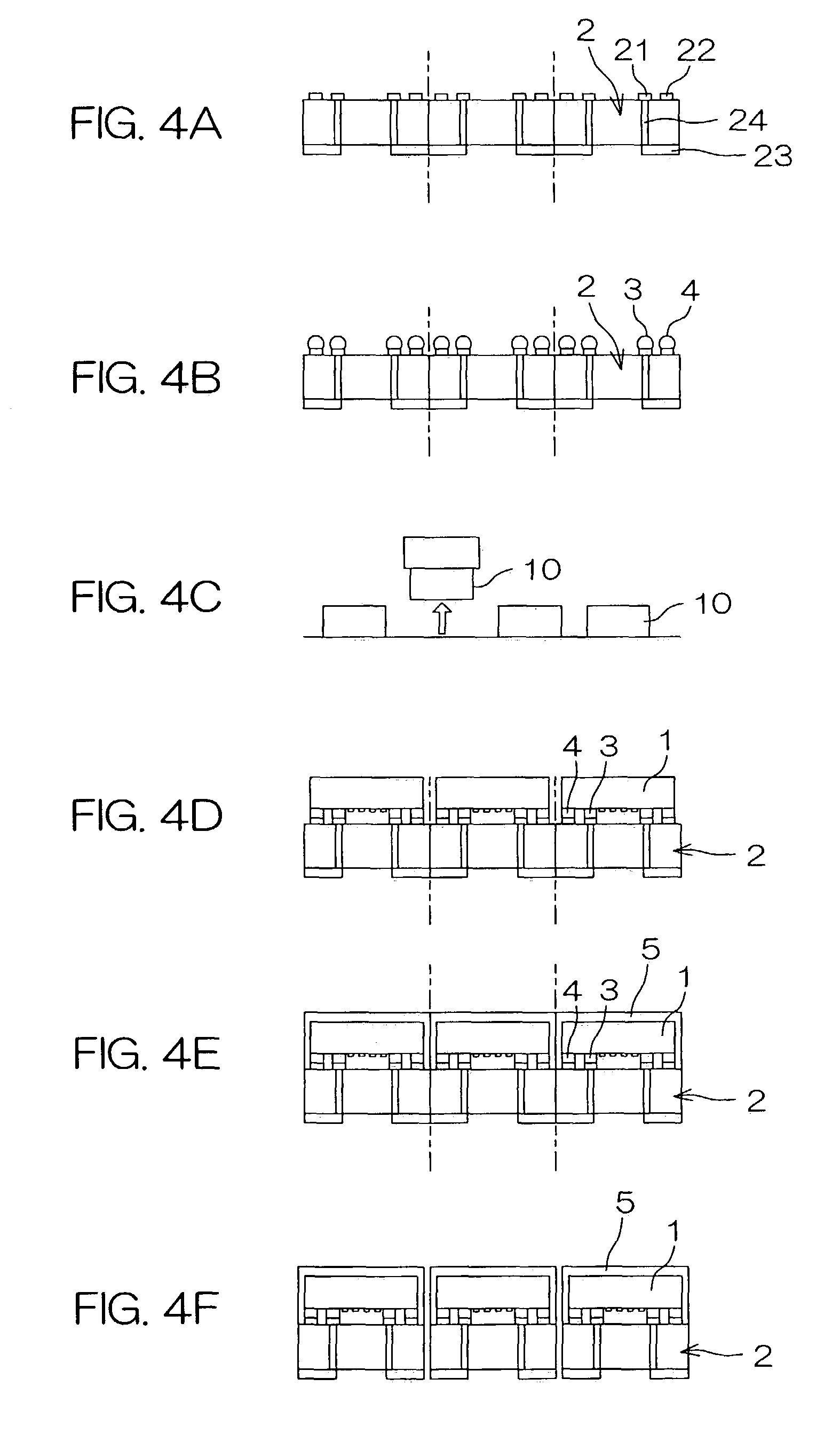Surface acoustic wave device and method for manufacturing same
a surface acoustic wave and acoustic wave technology, applied in the direction of generators/motors, instruments, impedence networks, etc., can solve the problems of reducing the efficiency of manufacturing, and causing a large amount of plastic strain and creep strain, so as to achieve the effect of drastically improving the manufacturing efficiency
- Summary
- Abstract
- Description
- Claims
- Application Information
AI Technical Summary
Benefits of technology
Problems solved by technology
Method used
Image
Examples
Embodiment Construction
[0073]FIG. 1 is a cross-sectional view of a surface acoustic wave device according to the present invention and FIG. 2 is a schematic plan view of a base substrate used for the surface acoustic wave device of the present invention. FIG. 3 is a schematic plan view showing various electrodes formed on one principal surface of a surface acoustic wave element.
[0074]The surface acoustic wave device comprises a surface acoustic wave element 1, a base substrate 2, a solder bump component 3, a solder sealing component 4 and an outer covering resin layer 5.
[0075]A surface acoustic wave resonator, surface acoustic wave filter or the like may be quoted as an example of the surface acoustic wave element 1. Each of them comprises a piezoelectric substrate 10 composed of quartz, lithium niobate (LiNbO3), lithium tantalate (LiTaO3) or the like, an Inter Digital Transducer electrode (including a comb-shaped electrode and reflector electrode, which is hereinafter simply referred to as the “IDT elect...
PUM
| Property | Measurement | Unit |
|---|---|---|
| elastic modulus | aaaaa | aaaaa |
| temperatures | aaaaa | aaaaa |
| temperatures | aaaaa | aaaaa |
Abstract
Description
Claims
Application Information
 Login to View More
Login to View More - R&D
- Intellectual Property
- Life Sciences
- Materials
- Tech Scout
- Unparalleled Data Quality
- Higher Quality Content
- 60% Fewer Hallucinations
Browse by: Latest US Patents, China's latest patents, Technical Efficacy Thesaurus, Application Domain, Technology Topic, Popular Technical Reports.
© 2025 PatSnap. All rights reserved.Legal|Privacy policy|Modern Slavery Act Transparency Statement|Sitemap|About US| Contact US: help@patsnap.com



